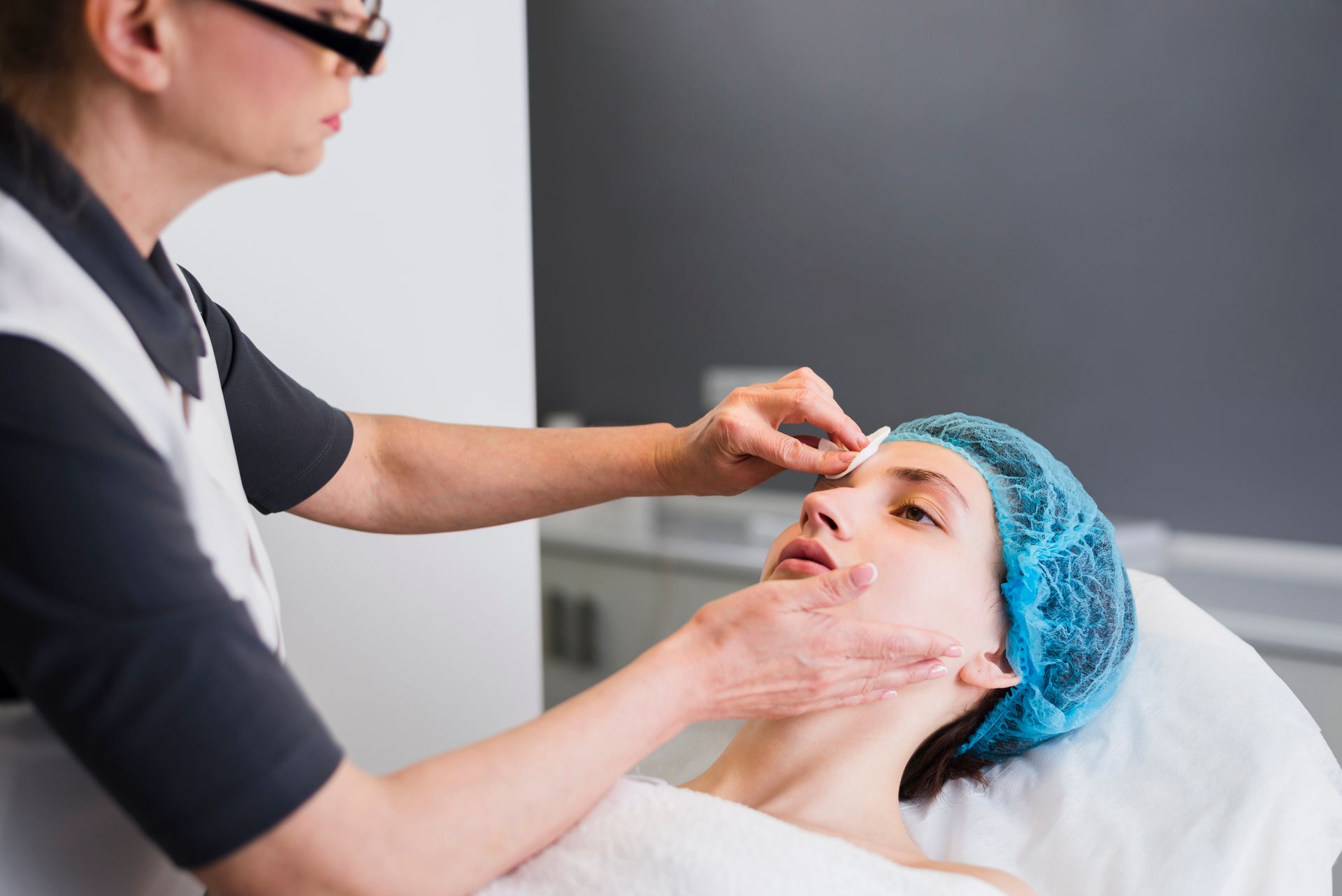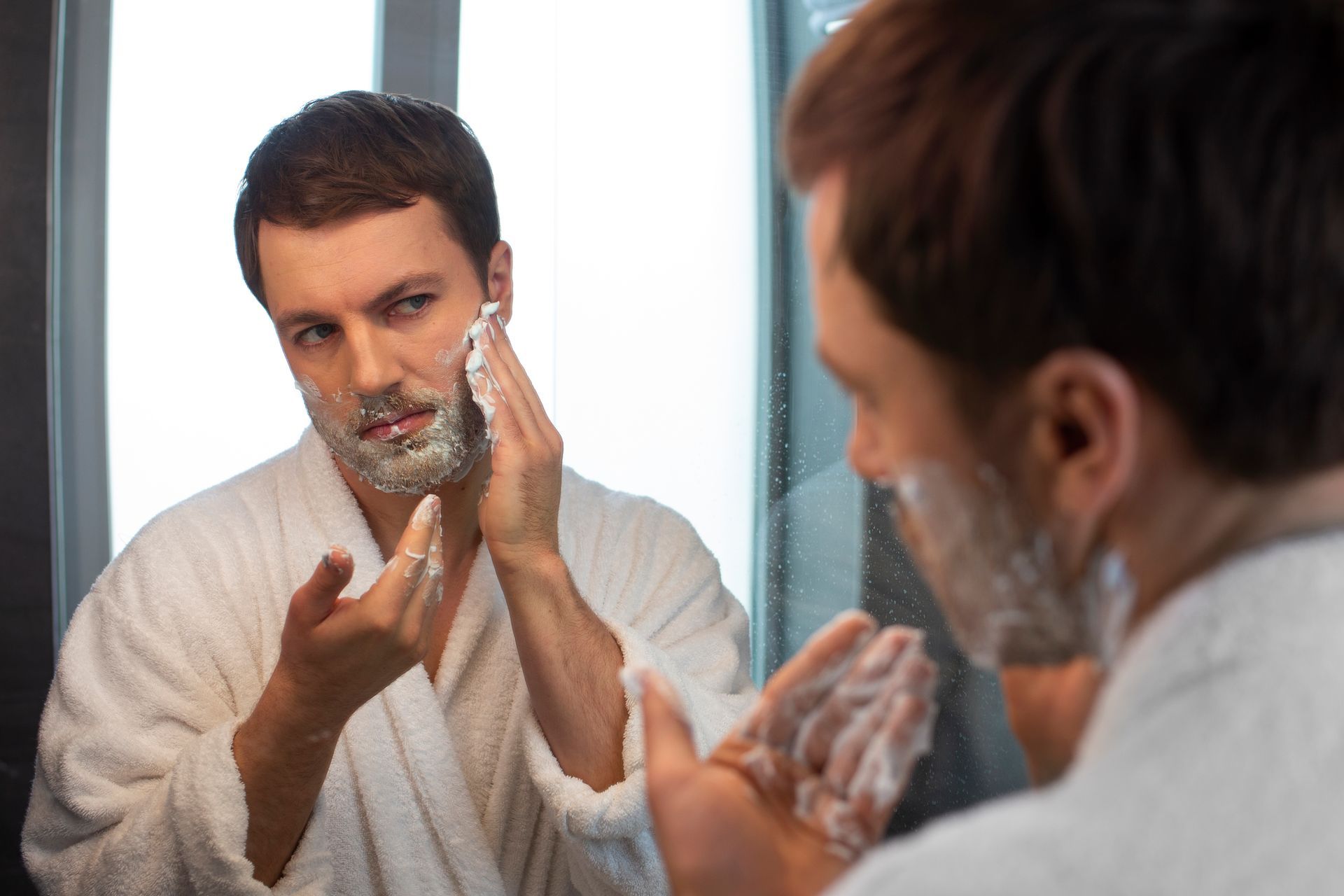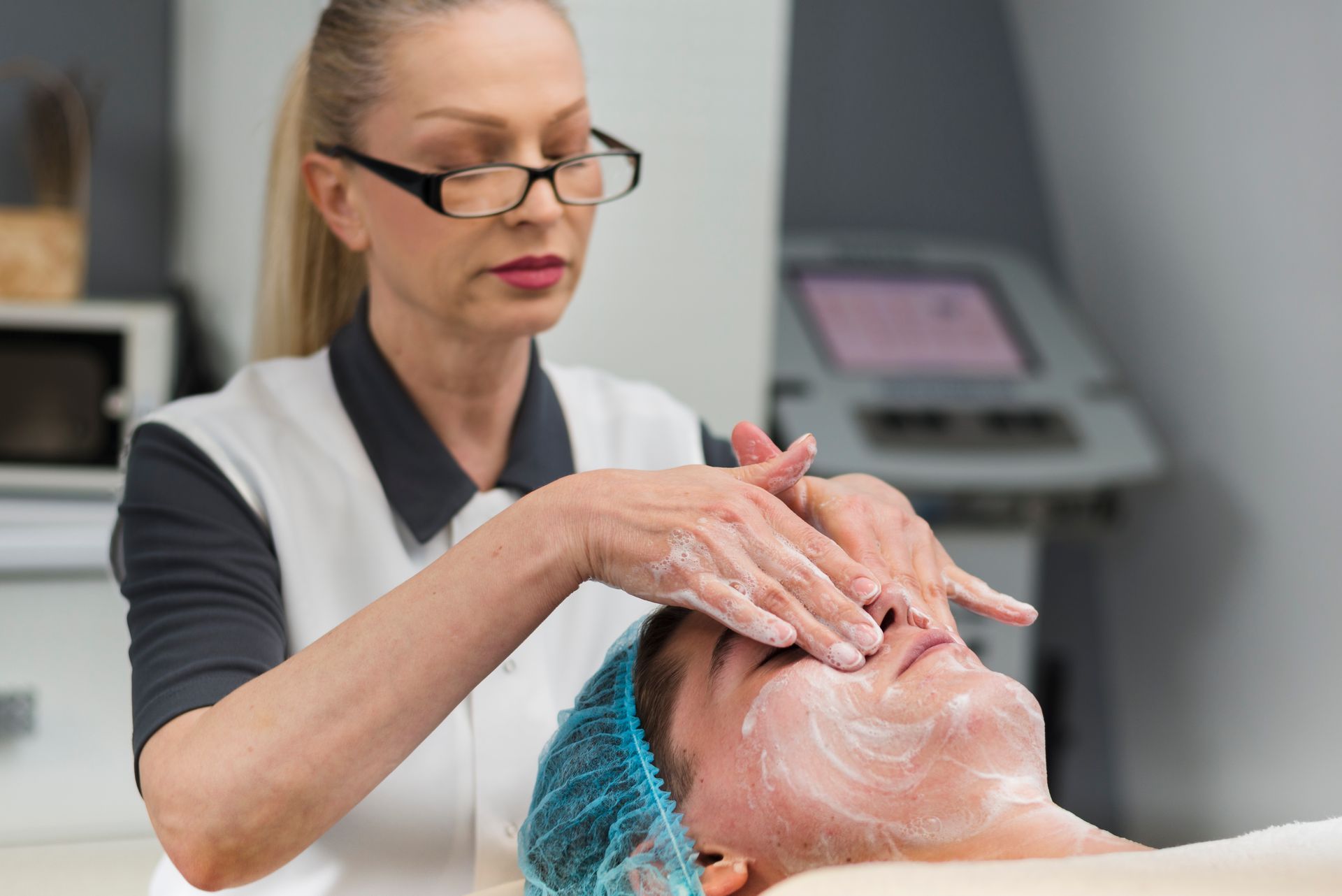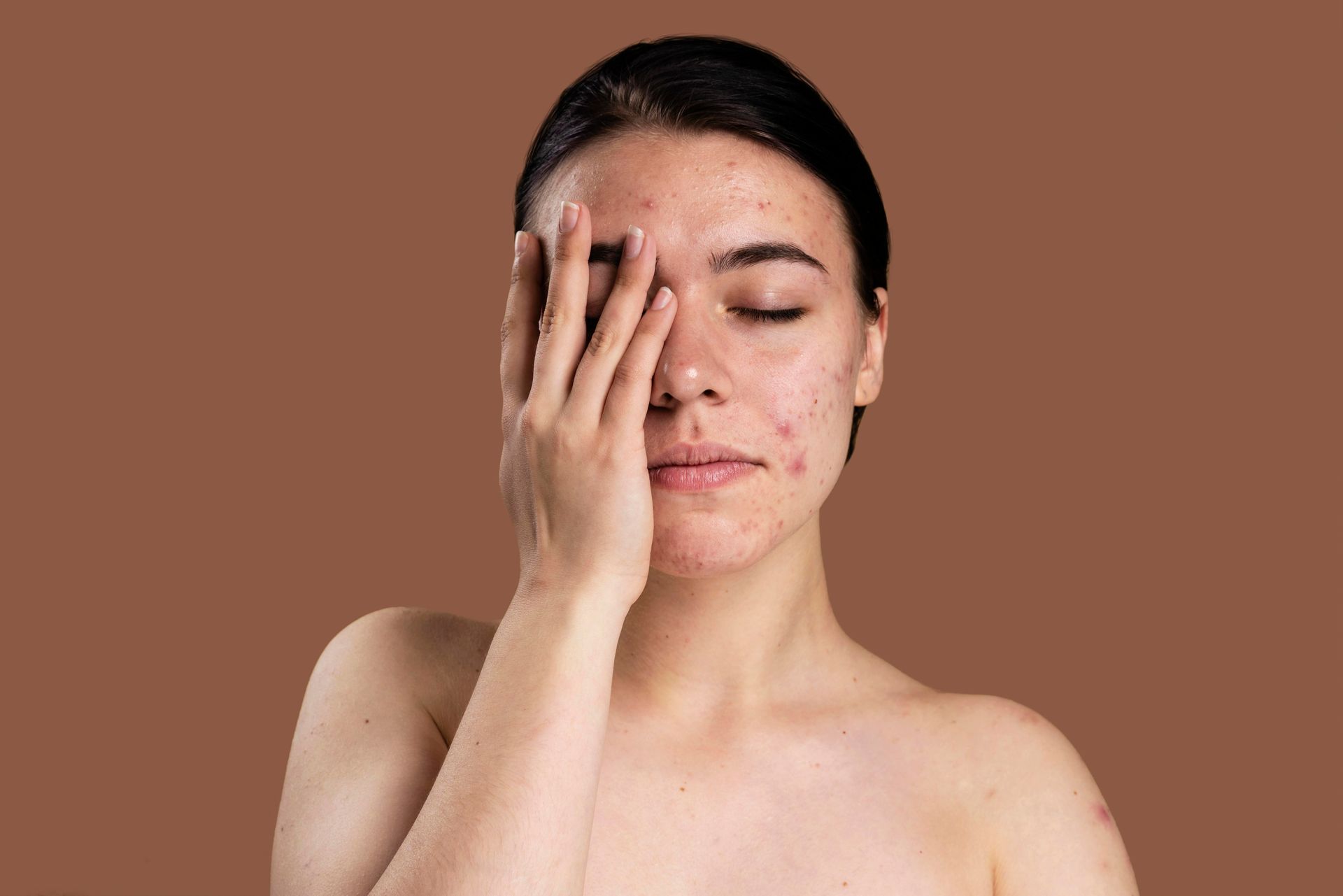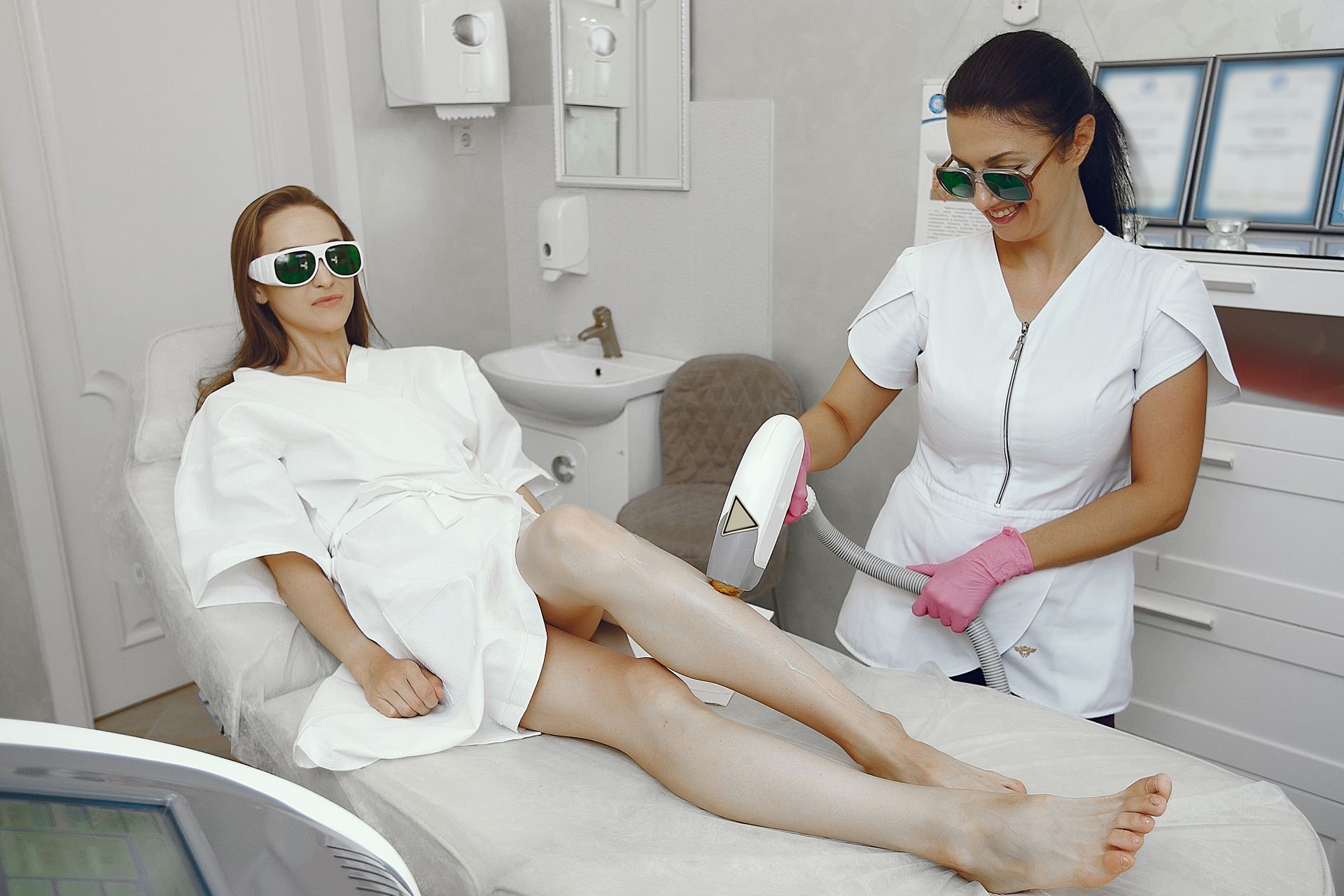Can Laser Hair Removal Effectively Treat Blonde Hair?
The quest for effective hair removal methods often stumbles upon a persistent myth: the perceived incompatibility between laser technology and blonde hair. While laser hair removal has long been lauded for its efficacy on darker hair tones, the belief that it falls short on lighter shades has prevailed. Yet, in the ever-evolving landscape of beauty technology, this myth is increasingly being challenged and debunked.
Blonde hair, with its inherent subtleties in pigmentation, has historically posed a challenge for conventional laser treatments. The contrast between the lightness of blonde hair and the targeted pigment absorption required for
successful laser removal has fueled skepticism. However, within the scientific realms and
technological advancements, a deeper understanding is emerging, reshaping perceptions and possibilities.
This exploration delves into the intricacies of this myth, dissecting the perceived barriers and unraveling the evolving relationship between laser technology and blonde hair. From the fundamental science underpinning laser hair removal to the cutting-edge adaptations tailored specifically for lighter hair tones, this discourse seeks to illuminate the truths and dispel the misconceptions that have shrouded the potential of laser treatment for blondes.
Join this journey as we navigate through the intertwined realms of technology, biology, and beauty, aiming to unravel the enigma surrounding the compatibility of laser hair removal with blonde hair. The myth is ripe for scrutiny, and the revelations within might just rewrite the narrative of what's achievable in the realm of hair removal for individuals with lighter locks.
Breaking Down the Science: How Lasers Target Hair
Laser hair removal operates on a meticulously calibrated scientific principle, harnessing the power of concentrated light to selectively target and disable hair follicles. Understanding the intricate science behind this process unveils the mechanics of how lasers effectively seek and destroy unwanted hair.
Laser hair removal relies on selective photothermolysis, where lasers emit specific wavelengths absorbed by melanin in hair follicles, damaging them while sparing surrounding skin. Matching laser wavelengths to melanin content makes traditional treatments effective for darker hair, but challenges arise with lighter shades due to lower melanin levels. Innovative technologies, including longer wavelengths and specialized lasers, aim to bypass melanin dependence, while techniques like dyes or cooling mechanisms enhance light absorption by lighter hair follicles. Precision beam targeting ensures effective treatment without harming surrounding skin, emphasizing the evolving potential of laser technology for addressing lighter hair removal challenges.
Understanding these scientific underpinnings of how lasers target hair follicles sheds light on both the successes and challenges encountered, particularly when dealing with lighter hair shades. This comprehension serves as the cornerstone for the ongoing advancements and adaptations in laser technology, aiming to widen the scope of effective hair removal treatments for individuals across diverse hair types and colors.
Challenges with Blonde Hair Removal
Blonde hair, characterized by its lower melanin content, presents distinctive hurdles in the realm of laser hair removal. The traditional mechanisms of laser treatment, reliant on melanin absorption for effective follicle targeting, encounter significant limitations when dealing with lighter hair shades. This unique set of challenges complicates the quest for efficient and reliable hair removal for individuals with blonde hair.
Melanin Absorption Deficiency
The primary obstacle lies in the scarcity of melanin pigment in blonde hair. Melanin, pivotal for the absorption of light energy in conventional laser treatments, is notably reduced in lighter hair shades. This deficiency compromises the laser's ability to effectively distinguish and target the hair follicles, reducing the treatment's efficiency.
Inadequate Contrast for Targeting
Laser hair removal heavily relies on the contrast between the hair pigment and surrounding skin to achieve precision targeting. With blonde hair, the lack of sufficient contrast between the hair follicle and the skin poses a challenge. This absence of stark contrast diminishes the laser's ability to precisely pinpoint and selectively heat the hair follicle without affecting the surrounding skin tissue.
Adaptation of Technology
Overcoming these challenges has prompted significant advancements in laser technology. Innovative approaches, such as utilizing longer wavelengths or incorporating specialized laser systems, aim to bypass the dependence on melanin absorption. These adaptations strive to enhance the laser's capacity to target lighter hair shades more effectively, albeit with varying degrees of success.
Variable Success Rates
The efficacy of laser hair removal on blonde hair exhibits variability among individuals, influenced by factors like hair thickness, skin tone, and the specific technology employed. While some individuals with lighter hair shades may witness satisfactory results, others may experience less conclusive outcomes, highlighting the unpredictable nature of traditional laser treatments on blonde hair.
Alternative Solutions and Considerations
In light of these challenges, individuals seeking hair removal options for blonde hair may explore alternative solutions. Techniques such as electrolysis, which targets individual hair follicles with an electrical current, or newer laser technologies specifically designed for lighter hair, might offer viable alternatives to traditional laser treatments.
Navigating the challenges of blonde hair removal within the realm of laser technology requires a nuanced understanding of the limitations and ongoing innovations. While traditional methods pose obstacles, the evolving landscape of hair removal technology continues to strive for breakthroughs to broaden the scope of effective treatments for individuals with lighter hair shades.
Adapting Laser Technology for Blonde Hair
The pursuit of effective hair removal solutions for blonde hair has spurred a wave of innovation and adaptation within the realm of laser technology. Overcoming the challenges posed by the lower melanin content inherent in lighter hair shades has been a focal point, leading to significant advancements aimed at enhancing the efficacy of laser treatments for individuals with blonde hair.
Tailoring Wavelengths and Energy:
Innovators in the field have been exploring the customization of laser wavelengths and energy levels to optimize treatment for blonde hair. Tailoring these parameters seeks to compensate for the reduced melanin absorption by calibrating the laser's output to better target and heat the hair follicles without relying solely on pigment contrast.
Longer Wavelengths and Specialized Lasers:
Introducing longer wavelengths of light has shown promise in bypassing the melanin absorption limitation. These longer wavelengths penetrate deeper into the skin, reaching the hair follicles more effectively even in the absence of abundant melanin. Additionally, specialized laser systems designed explicitly for targeting lighter hair shades have emerged, aiming to improve the precision and success rates of treatment.
Chromophore Dyes and Cooling Mechanisms:
Another avenue of adaptation involves the use of chromophore dyes or cooling mechanisms. These innovations aim to enhance the absorption of light energy by the hair follicles in blonde hair, augmenting the efficacy of laser treatments by facilitating better targeting and heating of the follicles.
Combined Modalities and Enhanced Techniques:
Some approaches blend multiple hair removal modalities or technologies, such as combining laser treatments with other methods like electrolysis. These hybrid approaches leverage the strengths of different techniques to overcome the limitations associated with treating blonde hair using lasers alone.
Ongoing Research and Development:
The quest to optimize laser technology for blonde hair is an ongoing journey marked by continuous research and development. Scientists and engineers are tirelessly exploring novel strategies and refining existing technologies to further bridge the gap and elevate the success rates of laser hair removal for individuals with lighter hair shades.
The adaptation of laser technology for blonde hair represents a dynamic field at the intersection of scientific innovation and beauty technology. While challenges persist, the concerted efforts to tailor laser treatments for individuals with lighter hair shades signify a promising trajectory toward more effective and inclusive hair removal solutions.
Effectiveness and Considerations
Assessing the effectiveness of laser hair removal for individuals with blonde hair involves a nuanced evaluation of various factors, including technological advancements, individual characteristics, and realistic expectations. Here, we delve into the considerations and outcomes pertinent to the efficacy of laser treatments on lighter hair shades. Advances in laser technology, particularly the development of specialized systems and calibrated wavelengths, have contributed to improved success rates for blonde hair removal. However, while these innovations show promise, the effectiveness can still vary widely among individuals, influenced by factors like hair thickness, skin tone, and the specific technology utilized.
It's crucial to set realistic expectations regarding the outcomes of laser hair removal for blonde hair. While some individuals may experience substantial
reduction in hair growth, others might observe more modest results. Understanding the variability in outcomes helps manage expectations and aids in assessing the success of the treatment based on individual response. Achieving optimal results often requires
multiple laser sessions, especially for individuals with blonde hair. Due to the reduced contrast between hair and skin, additional sessions may be necessary to effectively target and treat the follicles. Moreover, maintenance sessions might be needed periodically to sustain the desired results.
Individual characteristics, including hair color variation within the blonde spectrum and skin tone, significantly influence the treatment's efficacy. Lighter shades of blonde, closer in color to the skin tone, might pose greater challenges in achieving optimal results compared to darker blonde shades. Skin tone also plays a role, with contrasting skin tones enhancing the effectiveness of the treatment. Seeking consultation and guidance from experienced professionals is pivotal. A thorough assessment of individual characteristics and discussions about expectations, potential outcomes, and realistic goals are integral steps in determining the suitability and potential success of laser hair removal for blonde hair.
Navigating the effectiveness of laser hair removal for blonde hair involves acknowledging the multifaceted nature of the treatment, considering both technological advancements and individual nuances. Realistic expectations, informed decisions, and expert guidance are essential elements in optimizing the efficacy and outcomes of laser treatments for individuals with lighter hair shades.
Alternative Solutions for Blonde Hair Removal
For individuals with blonde hair seeking hair removal alternatives outside of traditional laser treatments, several viable options exist. These alternative solutions, tailored to accommodate the challenges posed by lighter hair shades, offer potential avenues for effective hair removal.
Electrolysis:
Electrolysis stands as a time-tested alternative for blonde hair removal. This method involves inserting a fine probe into individual hair follicles and applying an electrical current to destroy the follicle's ability to produce new hair. Electrolysis does not rely on pigment absorption, making it a suitable option for individuals with blonde hair.
Intense Pulsed Light (IPL) Devices:
IPL devices, although utilizing a different technology than traditional lasers, have gained popularity for hair removal. While not as selective as lasers, IPL emits a broad spectrum of light that targets melanin and can be effective for some individuals with lighter hair shades.
Topical Treatments and Depilatory Creams:
Topical treatments and
depilatory creams offer temporary hair removal by chemically dissolving the hair shaft. While these methods do not provide long-term solutions, they offer a quick and painless way to remove unwanted hair, especially for individuals seeking temporary solutions or managing fine blonde hair.
Waxing and Sugaring:
Waxing and sugaring remain popular options for hair removal across various hair types, including blonde hair. These methods involve applying a sticky substance to the skin, which adheres to the hair and is then swiftly removed, uprooting the hair from the follicle.
Prescription Treatments:
Certain prescription treatments, such as prescription creams containing eflornithine hydrochloride, can inhibit hair growth. While these treatments do not remove existing hair, they can slow down or reduce the growth of new hair.
Professional Consultation for Custom Solutions:
Seeking guidance from dermatologists or licensed professionals specializing in hair removal can provide personalized insights and recommendations. These experts can assess individual needs, considering factors like hair texture,
skin sensitivity, and specific concerns related to blonde hair removal, and suggest tailored solutions.
Exploring alternative solutions for blonde hair removal opens doors to a spectrum of options outside the realm of traditional laser treatments. These alternatives cater to different preferences, needs, and hair removal goals, offering diverse approaches for individuals seeking effective hair removal solutions for lighter hair shades.
Expert Insights and Recommendations
Experts in the field of dermatology and hair removal offer invaluable insights and recommendations regarding the challenges and options available for individuals seeking hair removal solutions, particularly those with blonde hair. Their expertise sheds light on effective strategies and considerations for achieving optimal results.
Experts emphasize the significance of personalized assessments when considering hair removal options for individuals with blonde hair. Assessing factors like skin tone, hair texture, and individual characteristics within the spectrum of blonde hair aids in determining the most suitable treatment approach. Dermatologists and professionals recommend staying informed about the latest technological advancements in laser hair removal specifically designed for lighter hair shades. Seeking consultations with experienced practitioners proficient in these advanced technologies helps individuals make informed decisions aligned with their needs.
The guidance of qualified professionals cannot be overstated. Dermatologists and licensed practitioners specializing in hair removal provide tailored advice, ensuring safe and effective treatment plans suited to an individual's unique requirements. After undergoing hair removal treatments, experts stress the significance of
post-treatment care and maintenance. Following prescribed skincare routines, protecting the skin from sun exposure, and adhering to maintenance sessions as recommended contribute to sustaining optimal results.
Professionals advocate for ongoing research and continued education within the field. Staying abreast of emerging technologies and treatment modalities enables practitioners to offer the most current and effective solutions for blonde hair removal. Incorporating expert insights and recommendations into the decision-making process empowers individuals seeking hair removal solutions for blonde hair. Leveraging the guidance of experienced professionals ensures informed choices aligned with individual needs, promoting effective and satisfactory outcomes.
Conclusion
The viability of laser treatment for blonde hair stands as a realm undergoing significant evolution. While traditional laser methods have encountered challenges due to reduced melanin content in lighter hair shades, innovative technological adaptations offer promising avenues. With tailored wavelengths, specialized systems, and ongoing advancements, laser treatments are increasingly demonstrating efficacy in addressing the nuances of blonde hair removal. Expert guidance, realistic expectations, and a nuanced understanding of individual characteristics remain pivotal in maximizing the potential of laser technology for effective and inclusive hair removal solutions for individuals with blonde hair. As research progresses and technologies evolve, the future holds immense potential for further refining laser treatments, affirming their growing viability for successfully managing blonde hair removal.

